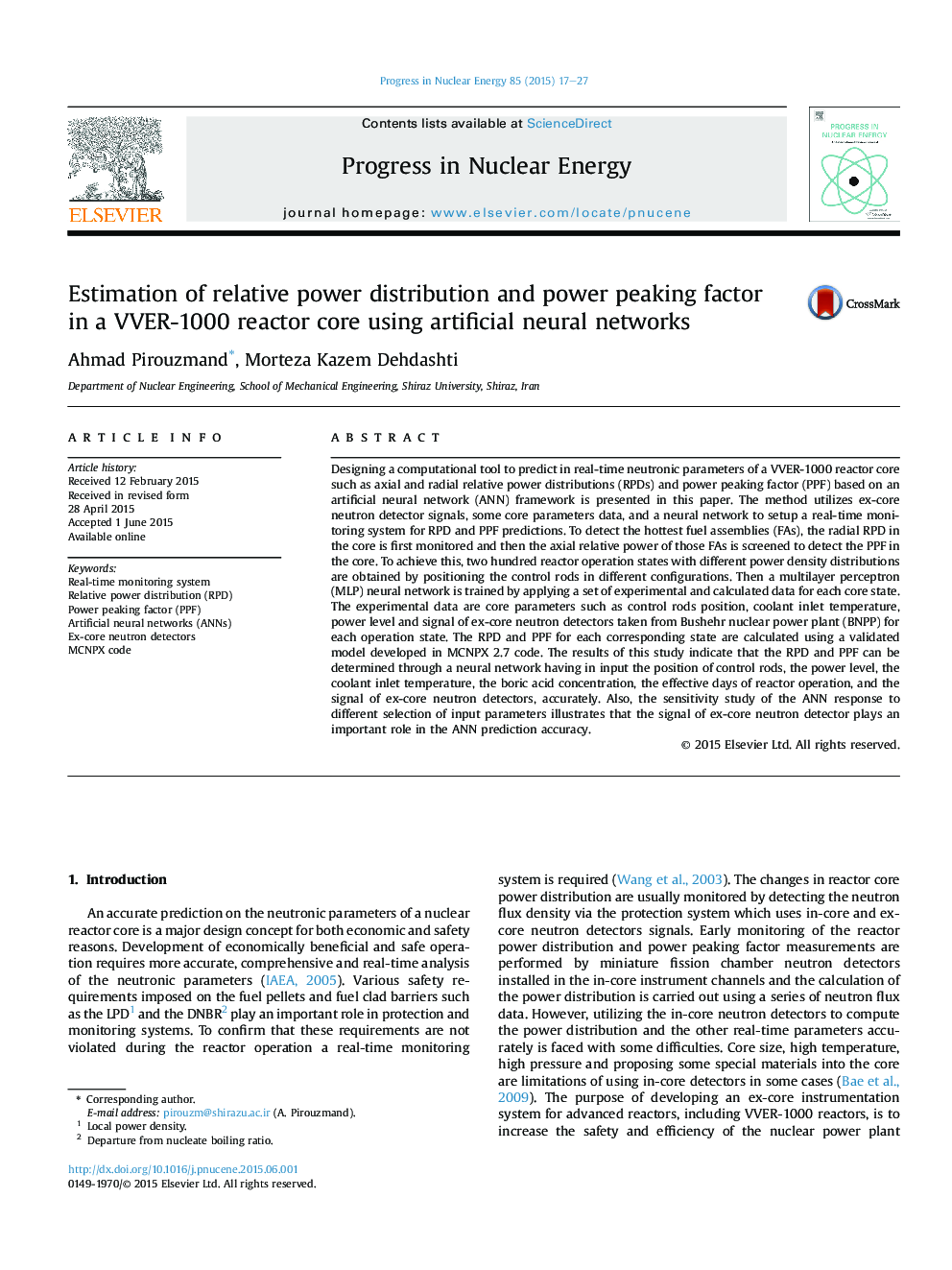| Article ID | Journal | Published Year | Pages | File Type |
|---|---|---|---|---|
| 8085065 | Progress in Nuclear Energy | 2015 | 11 Pages |
Abstract
Designing a computational tool to predict in real-time neutronic parameters of a VVER-1000 reactor core such as axial and radial relative power distributions (RPDs) and power peaking factor (PPF) based on an artificial neural network (ANN) framework is presented in this paper. The method utilizes ex-core neutron detector signals, some core parameters data, and a neural network to setup a real-time monitoring system for RPD and PPF predictions. To detect the hottest fuel assemblies (FAs), the radial RPD in the core is first monitored and then the axial relative power of those FAs is screened to detect the PPF in the core. To achieve this, two hundred reactor operation states with different power density distributions are obtained by positioning the control rods in different configurations. Then a multilayer perceptron (MLP) neural network is trained by applying a set of experimental and calculated data for each core state. The experimental data are core parameters such as control rods position, coolant inlet temperature, power level and signal of ex-core neutron detectors taken from Bushehr nuclear power plant (BNPP) for each operation state. The RPD and PPF for each corresponding state are calculated using a validated model developed in MCNPX 2.7 code. The results of this study indicate that the RPD and PPF can be determined through a neural network having in input the position of control rods, the power level, the coolant inlet temperature, the boric acid concentration, the effective days of reactor operation, and the signal of ex-core neutron detectors, accurately. Also, the sensitivity study of the ANN response to different selection of input parameters illustrates that the signal of ex-core neutron detector plays an important role in the ANN prediction accuracy.
Related Topics
Physical Sciences and Engineering
Energy
Energy Engineering and Power Technology
Authors
Ahmad Pirouzmand, Morteza Kazem Dehdashti,
